![[Japanese entertainment entertainment guide] 10 famous entertainment districts in Japan that you can understand in 10 minutes](https://global.ranking-deli.jp/guide/en/wp-content/uploads/sites/6/2024/03/thumb_0.png)
When going to the entertainment industry in Japan, we recommend using shops located in famous red-light districts.
This is because there are multiple advantages, such as the large number of stores making it easy for foreigners to find stores that are open to foreigners, many locations with good transportation and easy access, and the presence of cashless stores.
However, going to a place outside of your living area is difficult because there are many things you don’t know.
In this article, we will introduce you to the red-light districts that represent Japan!
We have summarized not only the characteristics and access of each red-light district, but also points to keep in mind when using Japanese brothels.
Please use this as a reference when actually playing!
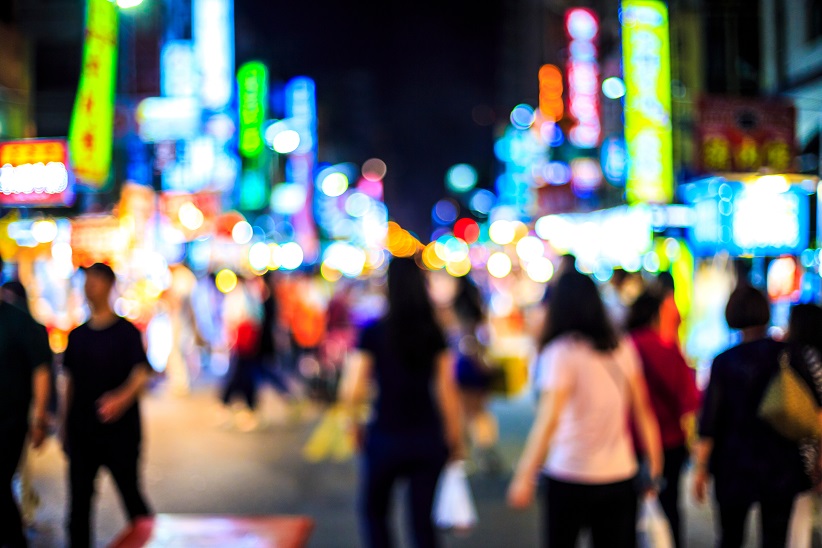
In Japan, a red-light district is a small area where shops that mainly provide sex services are gathered.
There are similar words such as downtown and entertainment district, but keep in mind that they all have different meanings.
A downtown area refers to a prosperous area in a town where restaurants and commercial facilities are gathered.
A red-light district has the same meaning as a downtown area, but it refers to an area where there is a concentration of pleasure-oriented shops such as izakayas and adult entertainment establishments.
In other words, the red-light district is a part of the entertainment district.
Each region of Japan has its own famous red-light district, so just like when you’re traveling or sightseeing, it’s easy to find information by searching for “red-light district place names.”
By the way, within the red-light district, the area lined with shops focused on the soapland industry is called the Soap District.
Please keep in mind that some of the typical Japanese red-light districts introduced below include soap districts.
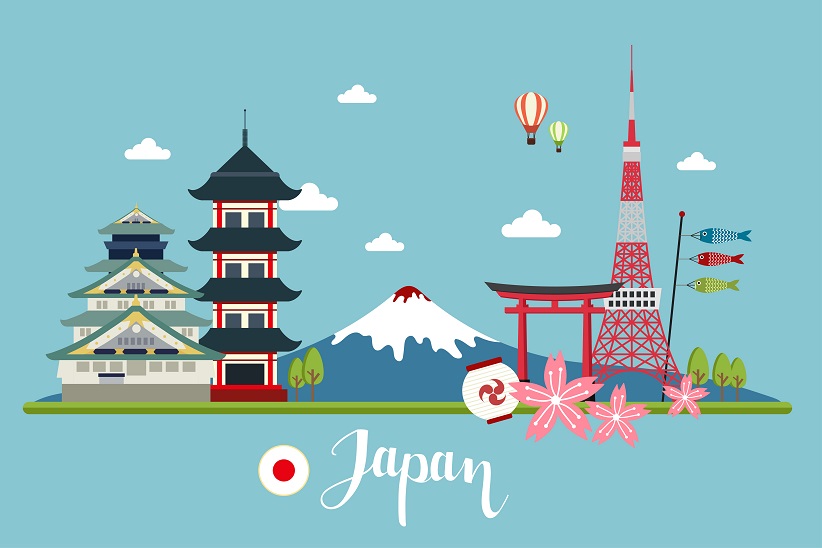
First, let’s take a look at the red-light districts throughout Japan on a map.
| Local name | Name of prefectures |
| Hokkaido region |
【Hokkaido】
・Susukino (Sapporo City, Hokkaido) |
| Tohoku region |
【Akita】
・Kawabata (Akita City) 【Miyagi Prefecture】 ・Kokubuncho, Ichibancho (Sendai City) 【Fukushima Prefecture】 ・Onahama (Iwaki City) |
| Southern Kanto region |
【Saitama】
・Omiya Kita Ginza (Omiya Ward, Saitama City) ・Nishi Kawaguchi (Kawaguchi City) [Chiba Prefecture] ・Matsudo (Matsudo City) ・Sakaemachi (Chuo Ward, Chiba City) ・Nishi-Funabashi (Funabashi City) 【Tokyo】 ・Shinjuku Kabukicho (Shinjuku Ward) ・Yoshiwara (Senzoku, Taito Ward) ・Uguisudani (Taito Ward) ・Ikebukuro (Toshima Ward) ・Shibuya, Dogenzaka (Shibuya Ward) ・Gotanda (Shinagawa Ward) Such [Kanagawa] ・Haramachida (Sagamihara City) ・Horinouchi, Minamimachi (Kawasaki Ward, Kawasaki City) ・Akebono Town (Naka Ward, Yokohama City) ・Koganecho, Fukutomi Town (Naka Ward, Yokohama City) ・Honatsugi (Atsugi City) ・Hiratsuka (Hiratsuka City) |
| Northern Kanto/Koshin region |
【Ibaraki Prefecture】
・Sakuramachi (Tsuchiura City) ・Tenno Town (Mito City) 【Gunma Prefecture】 ・Minami Ichibangai (Ota City) ・Miyago (Isesaki City) 【Tochigi Prefecture】 ・Ikegami Town (Utsunomiya City) 【Yamanashi Prefecture】 ・Ura Kasuga (Central Kofu City) ・Isawa (Fuefuki City) |
| Hokuriku region |
【Ishikawa Prefecture】
・Yamashiro (Kaga City) ・Ishizaka (Kanazawa City) ・Katayamazu (Kaga City) [Fukui Prefecture] ・Around Fukui Station (Fukui City) [Niigata Prefecture] ・Furumachi Showa Shindo (Chuo Ward, Niigata City) |
| Tokai region |
【Shizuoka Prefecture】
・Ryogaecho (Aoi Ward, Shizuoka City) ・Sakemachi Street (Naka Ward, Hamamatsu City) ・Sahama Town (Nishi Ward, Hamamatsu City) ・15th Avenue (Numazu City) 【Mie Prefecture】 ・Around Kintetsu Yokkaichi Station Yokkaichi 2nd Avenue (Yokkaichi City) 【Gifu Prefecture】 ・Kanazuen (Gifu City) ・Yanagase (Gifu City) 【Aichi prefecture】 ・Around Nagoya Station (Nakamura Ward, Nishi Ward, Nagoya City) ・Daimon (Nakamura Ward, Nagoya City) ・Sakae (Naka Ward, Nagoya City) ・Nishiki (Naka Ward, Nagoya City) |
| Kinki region |
[Hyogo Prefecture]
・Shinkaichi, Fukuhara (Hyogo Ward, Kobe City) ・Kannami Shinchi (Amagasaki City) ・Kita-Nagasa Dori (Chuo-ku, Kobe City) 【Kyoto】 ・Kawaramachi, Kiyamachi (Shimogyo Ward, Kyoto City) ・Gion, Shimizu (Higashiyama Ward, Kyoto City) ・Fushimi, Kyoto Minami Inter (Fushimi Ward, Kyoto City) 【Shiga Prefecture】 ・Ogoto (Naega, Otsu City) [Osaka Prefecture] ・Matsushima Shinchi (Nishi Ward, Osaka City) ・Tobita Shinchi (Nishinari Ward, Osaka City) ・Soemon Town (Chuo Ward, Osaka City) ・Juso (Yodogawa Ward, Osaka City) ・Hankyu Higashidori Shopping District (Kita Ward, Osaka City) ・Obashi Town, Sakai Higashi (Sakai Ward, Sakai City) 【Wakayama Prefecture】 ・Tenno Shinchi (Wakayama City) |
| China region |
【Hiroshima Prefecture】
・Nagarekawa (Naka Ward, Hiroshima City) ・Yagenbori Yayoi Town (Naka Ward, Hiroshima City) ・Matsuhama Town (Fukuyama City) 【Yamaguchi Prefecture】 ・Buzenda (Shimonoseki City) ・Maruha Street (Takezaki Town) 【Okayama Prefecture】 ・Tamachi (Kita Ward, Okayama City) |
| Shikoku region |
【Kochi Prefecture】
・Sakaimachi, Tamamizu-machi (Kochi City) 【Tokushima Prefecture】 ・Akita Town (Tokushima City) 【Kagawa Prefecture】 ・Yaegaki Shinchi (Takamatsu City) 【Ehime Prefecture】 ・Dogo Tako Town (Matsuyama City) |
| Kyushu region |
【Fukuoka Prefecture】
・Funto Town (Kokurakita Ward, Kitakyushu City) ・Nakasu (Hakata Ward, Fukuoka City) ・Zasokukuma (Hakata Ward, Fukuoka City / Onojo City, Fukuoka Prefecture) ・Culture District (Kurume City, Fukuoka Prefecture) 【Nagasaki Prefecture】 ・Hamaguchi Town (Nagasaki City) [Miyazaki Prefecture] ・Nishitachibana Street, Uenocho (Miyazaki City) 【Saga Prefecture】 ・Ureshino Onsen (Ureshino City) ・Takeo (Takeo City) 【Kumamoto Prefecture】 ・Shimodori (Chuo Ward, Kumamoto City) 【Oita Prefecture】 ・Beppu Onsen (Beppu City) ・Miyakocho (Oita City) ・Back of Takegawara Onsen (Beppu City) 【Kagoshima prefecture】 ・Kotsuki Town (Kagoshima City) 【Okinawa Prefecture】 ・Tsuji (Naha City) ・Maehara (Ginowan City) |
Most major cities in Japan, such as Tokyo and Nagoya, have red-light districts, but you may also find them in unexpected places.
Knowing the location will help you find the best way to get there and help you decide on your travel plans.
Here we will introduce 10 representative red-light districts in Japan.
All of them are famous towns with a large number of adult entertainment establishments, so you should be able to easily find a establishment that suits you when you go out.
The introduction also touches on the characteristics of the town’s customs, security, access, etc.
Please use this as a reference when actually using it.
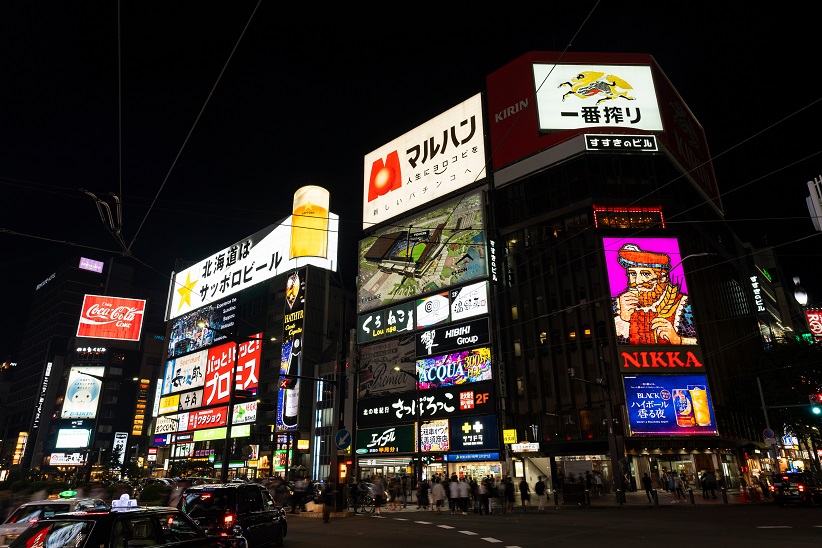
Speaking of Hokkaido’s red-light district, we are talking about Susukino in Sapporo.
Susukino is one of Japan’s three major entertainment districts, the others being Kabukicho in Shinjuku, Tokyo, and Nakasu in Fukuoka City, Fukuoka Prefecture.
It is the largest entertainment district in Japan north of Tokyo.
Not only that, but it is also said to be the northernmost entertainment district in Asia.
Although it is a large entertainment district, it is also known for its safety, so much so that it is safe for women to drink all night together.
In addition to restaurants, Susukino also has many adult entertainment establishments.
There are girls’ bars and cabaret clubs where you can enjoy talking and drinking with women, soaplands where women can wash their bodies, Fashion Health, which is a store-based sex shop, and delivery health services that use love hotels to provide sexual services.
As you can see, Susukino is a place filled with all kinds of nightlife, including sex and entertainment.
In terms of access, you can walk, take the subway, or take a taxi.
It takes about 20 minutes to walk from JR Sapporo Station, and it takes about 10 minutes by taxi and costs less than 1,000 yen.
If you are taking the subway, go from JR Sapporo Station to Sapporo Station on the Namboku Line. Get off at Susukino Station, which is two stations away. It takes about 3 minutes and costs 210 yen.
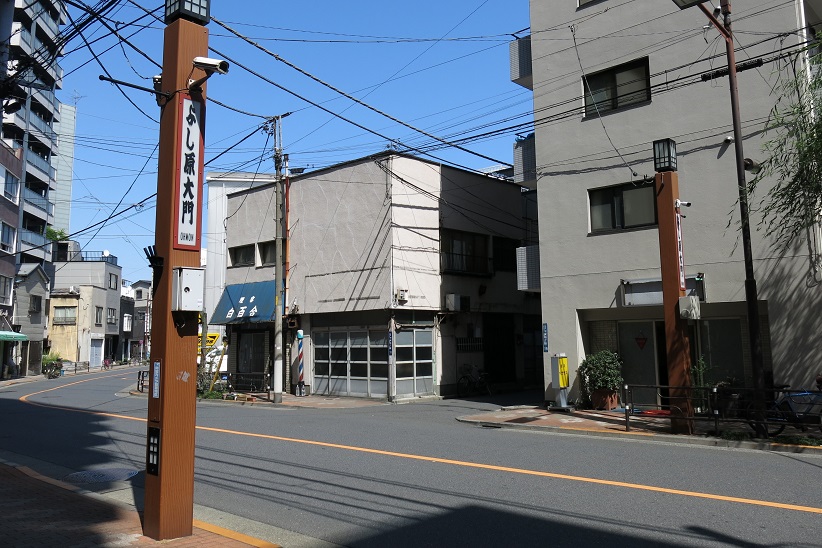
Yoshiwara is so famous that many people choose it as the number one red-light district in Tokyo.
The origin of “Yoshiwara” goes back more than 400 years to the “Yoshiwara Red Light District.”
Although it is a historic place, today’s Yoshiwara has over 100 soaplands crowded together in a limited area.
It can also be called a soap district because it specializes in soaps even among red-light districts.
Because it is the largest soap town in Japan, it is called one of Japan’s three major soap towns.
There are also “Kanazuen” in Gifu City, Gifu Prefecture, and “Ogoto” in Otsu City, Shiga Prefecture.
Basically, most of the customers use soap, and the surrounding area is a residential area, so safety is not an issue.
Since there are many soaps in Yoshiwara, each store has a variety of prices and concepts.
There are stores ranging from cheap ones to ultra-luxury stores, so we recommend researching the store you want to visit beforehand.
In terms of access, you will most likely use JR Uguisudani Station or Tokyo Metro Hibiya Line Minowa Station.
It takes about 20 minutes to walk from either station, but some shops will provide shuttles.
You can also request transportation from the store you want to use in advance, so it is convenient to decide on the store in advance.
It’s also a 15-minute walk from Asakusa, a popular tourist destination, so it’s a good idea to include it in your travel plans.
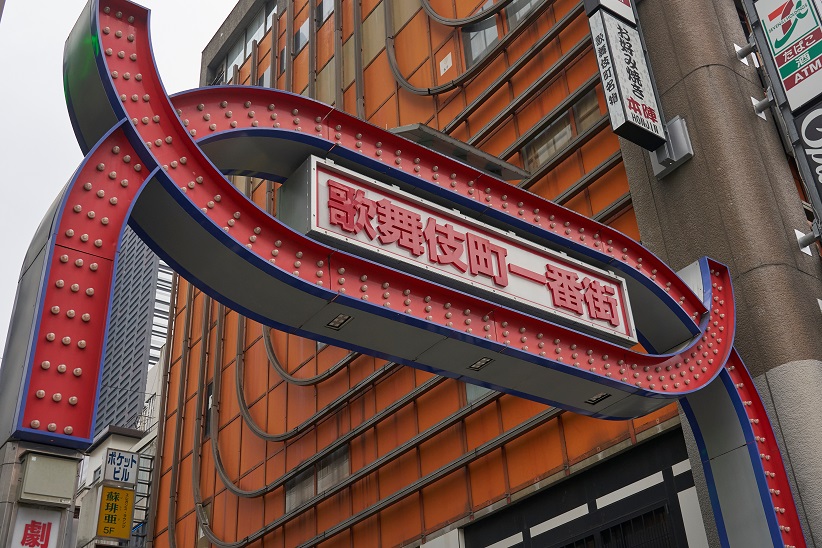
Kabukicho, located in Shinjuku, is said to be the largest entertainment district not only in Tokyo but also in Japan.
Kabukicho is one of Japan’s three major entertainment districts, the others being Susukino in Sapporo, Hokkaido, and Nakasu in Fukuoka City, Fukuoka Prefecture.
It is also known as the city that never sleeps, as there are many shops that are open late at night and many people passing by.
Kabukicho is home to not only countless izakaya (Japanese pubs), but also internet cafes, pachinko parlors, movie theaters, and other facilities.
There are also many other cabaret clubs, host clubs, love hotels, and sex shops, making it the largest red-light district in Japan.
In terms of security, you need to be careful as there are touts and people who approach you.
If you are unfamiliar with Kabukicho or have concerns, it is a good idea to clarify your purpose and research the stores you want to visit in advance.
Regarding sex and entertainment, there are a large number of shops in proportion to the size of the entertainment district.
In particular, store-style fashion health and delivery health services that take advantage of the large number of love hotels are prominent and easy to use.
Access: About 5 minutes walk from Shinjuku Station. There are several stations named Shinjuku, so if you are not used to it, try heading from the east exit of JR Shinjuku Station.
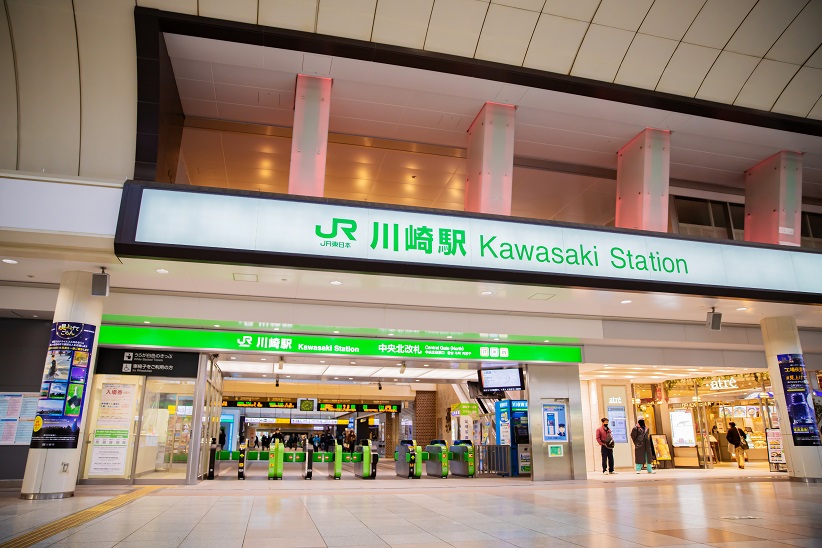
Horinouchi Minamimachi, located in Kawasaki City, is a famous red-light district in Kanagawa Prefecture.
Technically speaking, it is divided into two areas, “Horinouchi” and “Minamimachi,” but they are often explained together because they are so close that you can walk between them.
Like Yoshiwara in Tokyo, “Horinouchi Minamimachi” is a red-light district, but there are so many soaps that it can be established as a soap district.
It boasts the second largest number of soaps after Yoshiwara, making it a representative town in the Kanto region, and can also be said to be one of the best soap towns in Japan.
Soap shops are available in a wide range of price ranges, from budget stores to luxury stores, so you can buy soap according to your budget.
Although some of the shops are so prestigious that they are frequented by celebrities, the characteristic of Horinouchi Minamimachi is that there are generally many cheap shops and shops where you can hang out with young Japanese women.
In terms of security, as long as the area is recognized as a red-light district, there should be no problems. It’s also an area where there aren’t many pubs, so you don’t see many drunk people.
In terms of access, you can use JR Kawasaki Station and Keikyu Kawasaki Station.
Keikyu Kawasaki Station is close to Horinouchi, and JR Kawasaki Station is close to Minamimachi. Both are approximately 10 minutes walk from the station.
Also, it takes about 15 minutes to walk back and forth between Horinouchi and Minamimachi.
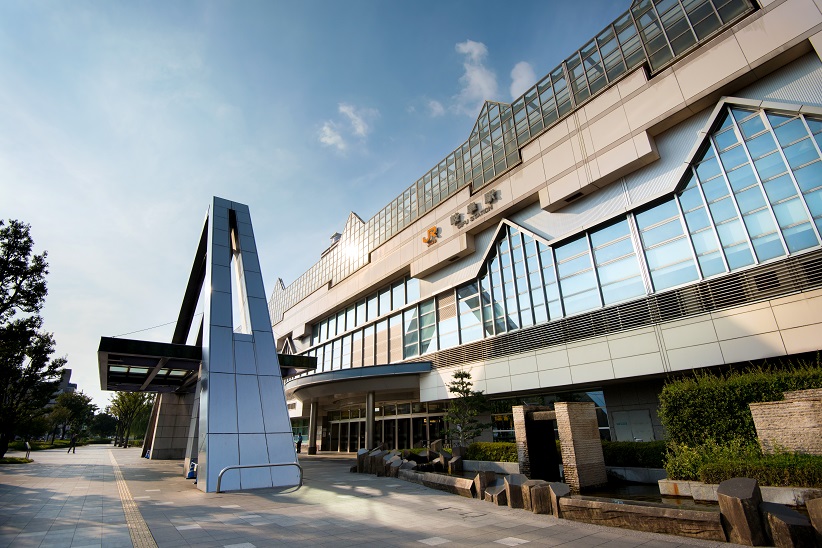
Kanazuen, located in Gifu City, Gifu Prefecture, is famous as one of Japan’s three major soap towns.
The other three major soap districts include Yoshiwara in Taito Ward, Tokyo, and Ogoto in Otsu City, Shiga Prefecture.
It is a town that specializes in soapland entertainment, and is visited by customers from all over Japan.
“Kanazuen” has been around since the Kanazu Red Light District, which was founded in the Meiji period about 150 years ago.
The townscape gives you a sense of the times, and you may feel a little nostalgic.
Some soap shops have exteriors modeled after Japanese-style castles or Western-style castles, so it’s interesting to just walk around.
A special feature of Kanazuen’s entertainment industry is that you can enjoy special ways of enjoying yourself using equipment such as the pink chair and the gold chair.
This service is rarely available in other areas of Japan, so it might be a good idea to try it out at a store that supports it.
There are no safety issues. The only facilities that stand out are soaps, and the people here all have a clear purpose.
There is no need to explain the access aspect. Leave from the central south exit of Gifu Station and you’ll be there in just 2-3 minutes.
However, the means of transportation to get to Gifu Station will depend on where you are heading from.
For example, if you are coming from Nagoya City in Aichi Prefecture, which is the closest major city, it is about 20 minutes by train from Nagoya Station.

Nagoya, the center of Aichi Prefecture and one of the largest cities in Japan, is also a must-see for its red-light district.
In particular, there are many fashion health stores, and it is also known as a health sanctuary.
A unique feature of Nagoya Health is that, unlike other areas, there is an entrance fee.
Many stores have an entrance fee of around 2,000 yen, which is added to the cost of playing.
In addition, the entertainment industry in Nagoya is somewhat unique.
Unlike other red-light districts, many sex shops are not concentrated in a small area, but are scattered throughout Nagoya City.
For example, Nishiki has a large concentration of health stores, and Sakae and Nayabashi have many love hotels, so delivery health services are popular.
Daimon is also a soap town, and there are various types of entertainment around Nagoya Station.
As you can see, each place has its own characteristics, so if you’re going to enjoy the entertainment in Nagoya, be sure to check carefully what you want to experience and where you want to go.
There are almost no safety issues. There are almost no differences depending on the location, so you can walk around anywhere with peace of mind.
In terms of access, the city has well-developed transportation systems, making it possible to travel to various locations in a short amount of time.
However, there are many different trains, so be careful not to board the wrong one.
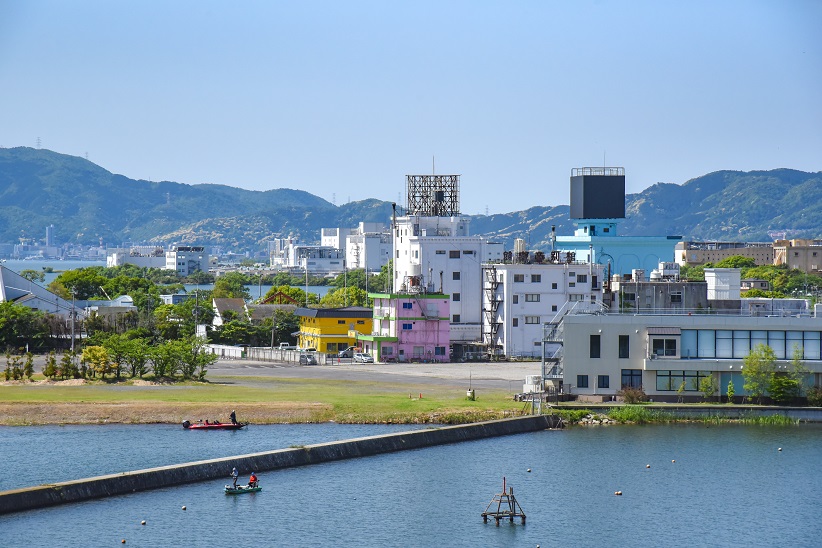
Ogoto Onsen, located in Naeka, Otsu City, Shiga Prefecture, is also famous for its red-light district.
It is also counted as one of Japan’s three major soap towns, and when you mention “Ogoto”, some people think of soap rather than hot springs.
The other three major soap towns include Yoshiwara in Taito Ward, Tokyo, and Kanazuen in Gifu City, Gifu Prefecture.
Ogoto soap town was formed after 1970, so it has a relatively short history among Japanese soap towns.
However, it rapidly developed into a soapland district and now has a large presence in the entertainment scene in western Japan.
One of the characteristics of Ogoto’s entertainment industry is that there are many long-established establishments, so you can enjoy the entertainment with peace of mind.
Even though it has a short history, there are many shops that have continued for a long time, so unlike other soap districts, the turnover of shops is relatively slow.
In terms of safety, you can feel safe. “Ogoto” is located far from the downtown area of Shiga Prefecture, and it is a place where there are only soaps, so problems are unlikely to occur.
On the other hand, the access aspect can be said to be somewhat poor.
It takes about 30 minutes to walk from the nearest Ogoto Onsen Station and Hieizan Sakamoto Station.
Instead, Ogoto soaps will provide transportation, so be sure to ask about transportation options when you make a reservation.
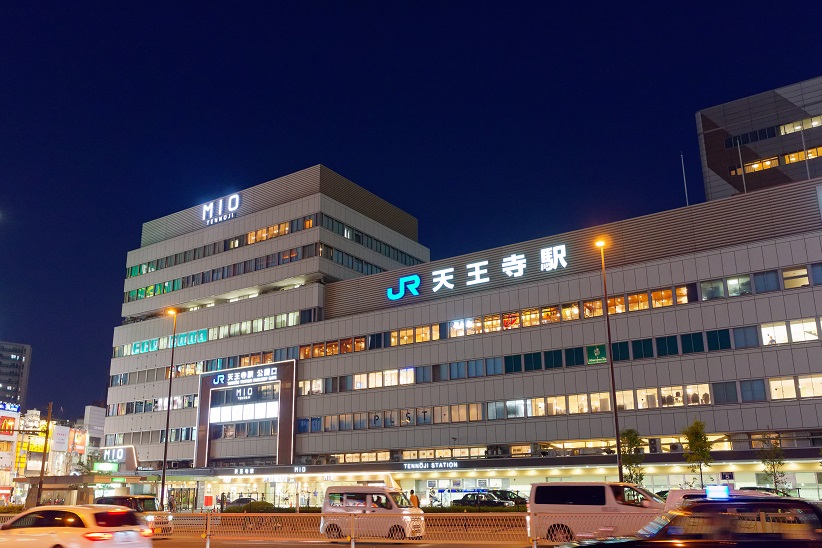
Tobita Shinchi is indispensable when talking about the entertainment industry in Osaka Prefecture.
“Tobita Shinchi” is a place that continues from the Tobita red-light district, which was built in the Taisho period more than 100 years ago.
The current shops in Tobita Shinchi operate as “restaurants,” so they may not be accurately called a red-light district.
However, there are ways to enjoy Tobita Shinchi that are unique to Tobita Shinchi, so it’s a good idea to try it out when you’re sightseeing in the Osaka area.
The main trend is that at the entrance of a restaurant facing the street, there are girls who serve customers and older women who attract customers.
If you find a girl you are interested in, you can immediately enter the store and receive services. Generally speaking, the time should be short, such as 15 or 30 minutes.
Please be aware that there are unspoken rules at Tobita Shinchi, such as no photography allowed, no price reductions, and no entry for women.
Security is good. Tobita Shinchi is a closed area and has strict rules, although you can freely enter and exit the area.
Access: 10 minutes from JR Tennoji Station, Osaka Metro Midosuji Line/Sakaisuji Line Dobutsuen-mae Station, and Osaka Metro Tanimachi Line Abeno Station.
You can use any station, but it’s easy to get lost, so check the map before heading there.

Fukuhara in Kobe City, Hyogo Prefecture is home to the largest soap town in western Japan.
Fukuhara’s origins date back to the Fukuhara red light district that opened in 1868, and today it is home to many soaplands.
It is so popular as a soapland town that it is also called the Yoshiwara of the West, and there are many users who come from nearby areas to play and girls who come to work.
One of the characteristics of Fukuhara is that there are shops with various concepts that take advantage of its large size.
Although it is called the Yoshiwara of the West, the average budget is relatively low.
Another characteristic of Fukuhara is that many of the soap shops open in the morning, making it crowded from early hours.
Kobe is also a popular tourist destination, and since it can be visited along with Kyoto and Osaka on a trip, we recommend organizing a tour.
In terms of security, there will be no problem if you are a man who intends to use the soap.
Access: About 15 minutes walk from JR Kobe Station. It is about 5 minutes from Shinkaichi Station on the Hanshin Kobe Rapid Line.
If you have something to do first at Kobe Sannomiya Station or Motomachi Station, it’s convenient to use the Hanshin Kobe Rapid Line, but if you’re coming from JR Kobe Station, it’s better to walk there.
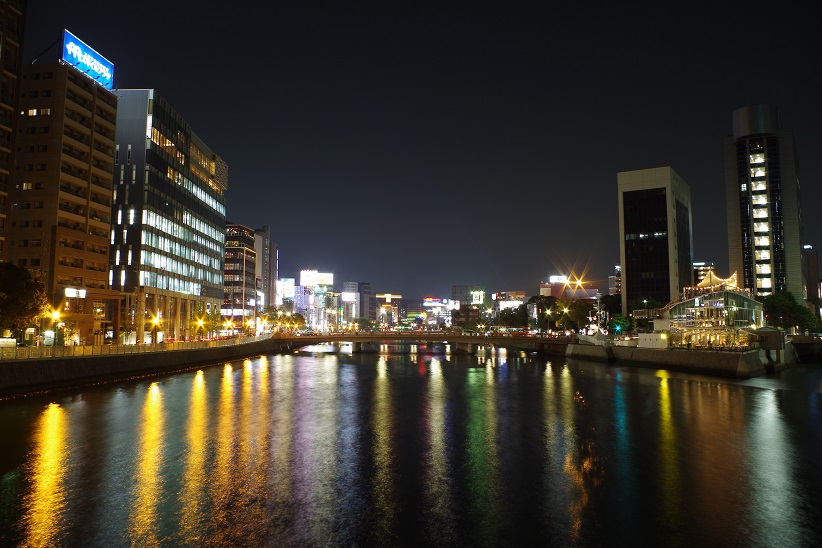
Nakasu, located in Fukuoka City, Fukuoka Prefecture, is counted as one of Japan’s three major entertainment districts, and is a must-see when talking about Japan’s red-light districts.
The other three major entertainment districts include Susukino in Sapporo, Hokkaido, and Kabukicho in Shinjuku, Tokyo.
“Nakasu” is a large city that represents not only Fukuoka City, but also the Kyushu region and western Japan.
As a result, many people come from all over the world for travel, business, and work.
There are also quite a number of adult entertainment shops, and it is no exaggeration to say that they have everything from soaps, delivery health services, and store-based health services.
Characteristics of Nakasu’s entertainment industry include the large number and variety of shops, as well as the in-store health service called Tokuyoku.
The basic sexual services are the same as regular health stores, but in addition, Tokuyoku has a bathroom in the room, and special play in the bathroom such as body washing and mat play.
In terms of public safety, it’s not particularly good as it’s a big entertainment district, but if you’re just going for sex entertainment, there’s basically no problem.
As long as you behave normally, such as not approaching drunk people or walking into back alleys for no reason, you can walk around the downtown area just like any other city.
In terms of access, you can arrive at the red-light district in just 2 to 3 minutes on foot from Nakasu Kawabata Station on the Subway Airport Line.
It’s about a 10-minute walk from Tenjin, a famous downtown area in Fukuoka City, so you can walk there while shopping or eating and drinking.

Here are four points to keep in mind to enjoy your time in Japan’s red-light districts.
Red-light districts and the brothels within them are recognized as somewhat special places in the Japanese consciousness.
If you use it as if you were using a regular restaurant in the city, you may run into unexpected problems, so be sure to keep these points in mind.
don’t carry large amounts of money
Red light districts are often located near or in the same location as red light districts.
Although Japan is one of the safest countries in the world, there is a possibility of your wallet being stolen in crowded places.
Take measures such as carrying only the amount you need or preparing multiple wallets to keep your money separate.
Furthermore, entertainment is a form of entertainment that connects to human desire.
You may want to spend as much money as you can, such as extending play time or adding options.
By carrying only the amount you can use for fun, you can have fun without regrets.
Cash payment is the mainstream payment method at Japanese adult entertainment establishments.
In recent years, an increasing number of stores have introduced credit cards and electronic payments, but they are still not standard.
Especially in small shops and local red-light districts, cashless transactions are often not yet established.
I was really looking forward to the sex games, but they only accepted cash payments so I couldn’t play.
To avoid this, make sure you have enough cash to play with.
Store-style adult entertainment establishments such as soaplands and Fashion Health (including Tokuyoku) are not open late at night between 12:00 a.m. and 6:00 a.m.
This is because Japanese law prohibits operations during these hours.
The store closes at 0:00, so please be sure to register before 11:00 pm at the latest.
If you plan to use a store-style entertainment facility, please allow plenty of time.
Also, not all shops open at 6am, so it’s a good idea to check their opening hours.
By the way, there are many temporary adult entertainment businesses called delivery health that are open 24 hours a day.
We recommend that you decide on the time and type of store you want to visit.
There are many adult entertainment establishments in Japan that do not allow foreigners to use them.
The reason behind this seems to be that Japan is an island country and has fewer contacts with foreigners than other countries.
Many shops think that this is to avoid troubles caused by people who cannot communicate in languages other than Japanese or who have cultural differences with foreigners.
Choose a sex shop that doesn’t have a statement on its website that says “Foreigners are not allowed,” or choose a shop that says “Next to the station!” Please choose from the shops listed in “Paradise”.
We have introduced representative red-light districts from all over Japan.
Many red-light districts are connected to downtown areas, so it’s relatively easy to go there if you do a little research.
However, in Japan’s entertainment industry, there are still many places that do not accept non-Japanese customers.
First, narrow down the area you want to go to so you don’t end up wanting to use one but being turned down.
After that, be sure to check out “Eki Chika!” Please use “Paradise” to see if there are any stores where you can use it.
Also, there may be some rules for adult entertainment that are different from your home country, so if you have any questions or concerns, please ask the staff at the store.
Have a fun experience in Japan’s red-light district and make some good memories!